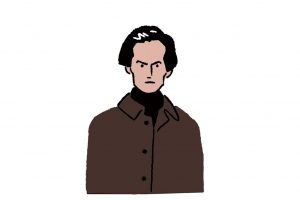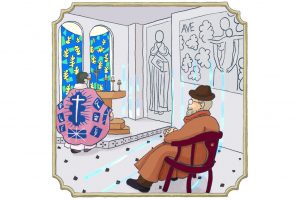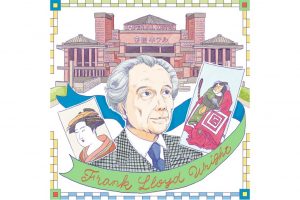Kaoru in “The Dancing Girl of Izu,” Komako in “Snow Country,” and Yumiko in “The Scarlet Gang of Asakusa” are among the heroines in Kawabata’s novels. Their personalities were mostly modeled after real people. Among the major influences was Hatsuyo Ito, who was working at a nearby café while Kawabata was studying at Tokyo Imperial University. He was in love with this girl who was 6 or 7 years younger than himself. They were almost engaged but suddenly broke up. The reason continues to be a matter of speculation even today. His works such as “South of the fire (Nanpo no hi),” “Fire (Kagaribi)” and “Emergency (Hijo)” were believed to have been written from Ito’s influence. A girl resembling Ito was repeatedly depicted in various other works in later years.
Yasunari Kawabata (First Part)
Examining artists
No.006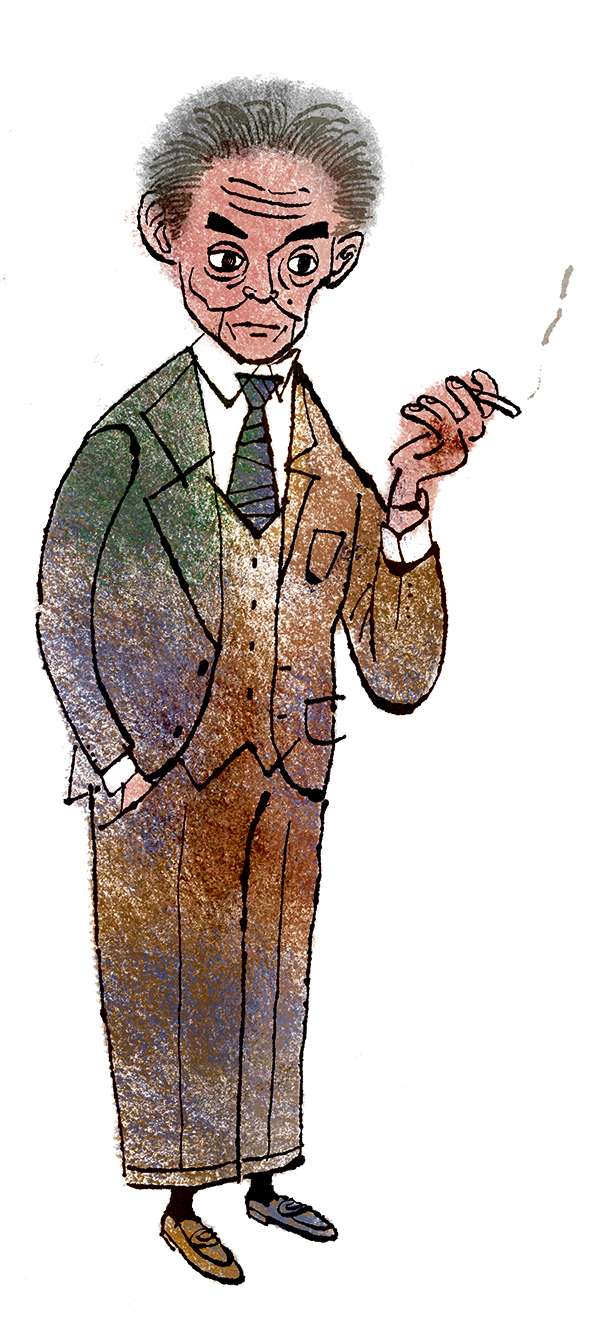
Yasunari Kawabata started studying literature at the age of 14. Kan Kikuchi discovered his talent while Kawabata was studying at Tokyo Imperial University. His works, along with those of Riichi Yokoo and others, were seen as part of the “Shinkankakuha” (new impressionists). Kawabata lived through Japan’s literary world in the 20th century and left a big impression in Japanese modern literature. He has plenty of anecdotes.
Illustration: Sora Toyoshima
Text and editorial design: TAN Editorial Group (Naoko Goda)
Yasunari Kawabata (1899-1972)
Born in Osaka.
A Japanese novelist who depicted Japan’s classical beauty in his sensitive writing. His representative works include “The Dancing Girl of Izu,” “Snow Country,” “The Sound of the Mountain,” “The Old Capital” and “Beauty and Sadness.” He won the Nobel Prize for Literature in 1968, a first for a Japanese author.
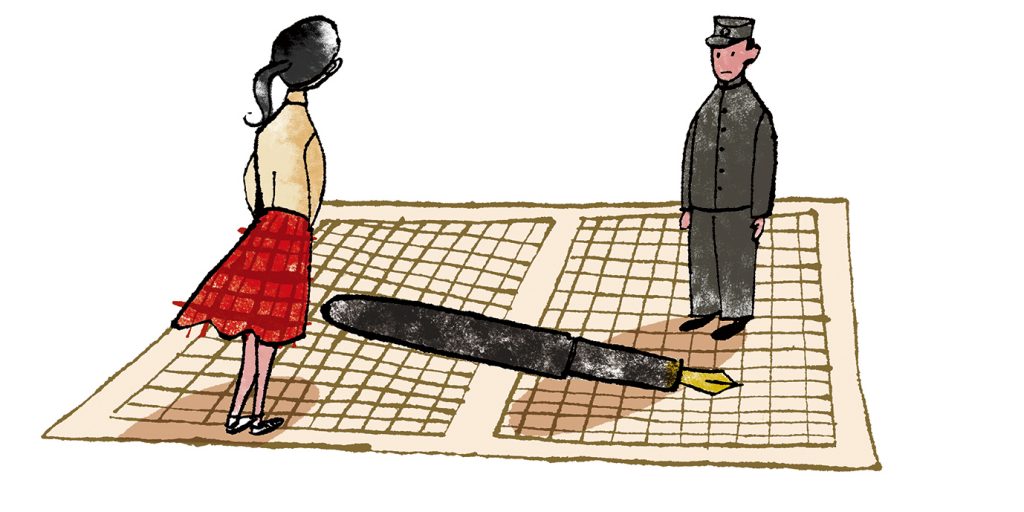
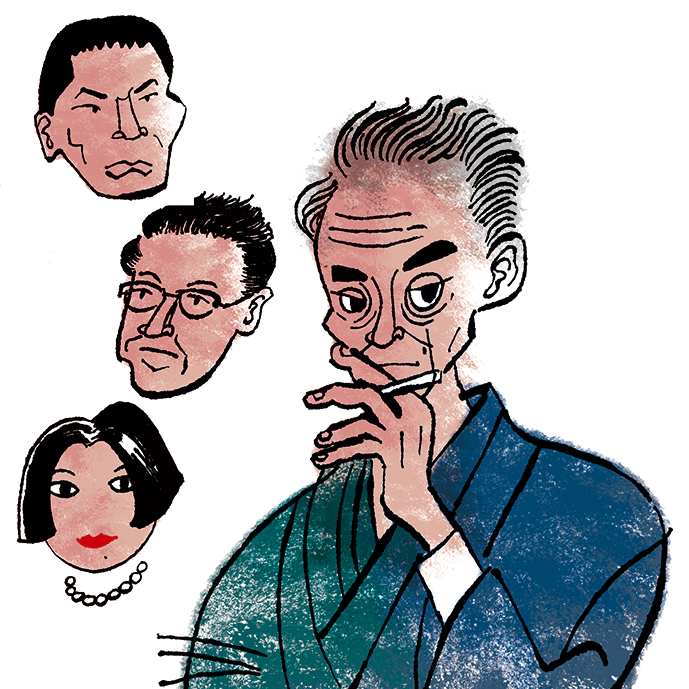
Kawabata lost his father when he was 2, and his mother the following year. An elder sister died when he was 10, and his grandfather passed on when he was 15. He was always seen as a difficult person who liked being alone. In fact, he was quiet but enjoyed communicating with many people since school age. He published novel magazines such as “Shinshicho” and “Bungei Jidai” with his friends. With those publications, he had become a successful novelist. He was soft-hearted and took good care of people. In his earlier career, he was also active as a literary clitic. He discovered the talent of Kanoko Okamoto, Motojiro Kajii, Sei Ito and numerous others and introduced them to the world of literature.
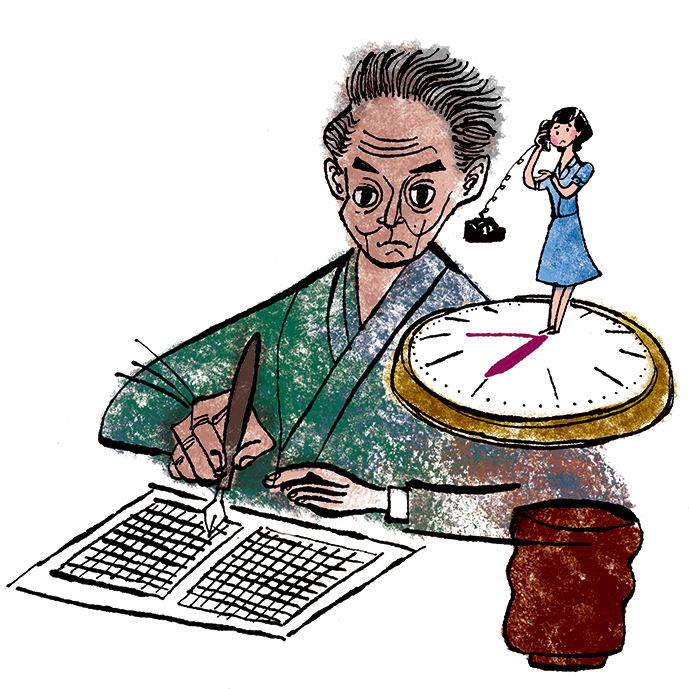
He often missed deadlines due to his busy schedule and slow pace of writing, creating problems for his editors. Shizuko Ohashi (1920-2013), who published “Kurashi no techo” magazine, was one. In her earlier career as an editor, Ohashi was ordered by the company to ask Kawabata to write a magazine article. Kawabata accepted but it was not ready by the due date when she visited. Kawabata promised to complete his article a few days later but again, it was not ready and he delayed five more times. Ohashi was almost crying at the entrance of Kawabata’s house despite being a very patient person. Kawabata was surprised and said in a soothing voice “I’ll write, I’ll write for you,” and completed the article within two hours.
<To be continued to the second part>
Supervised by Kokushokankokai Inc.


